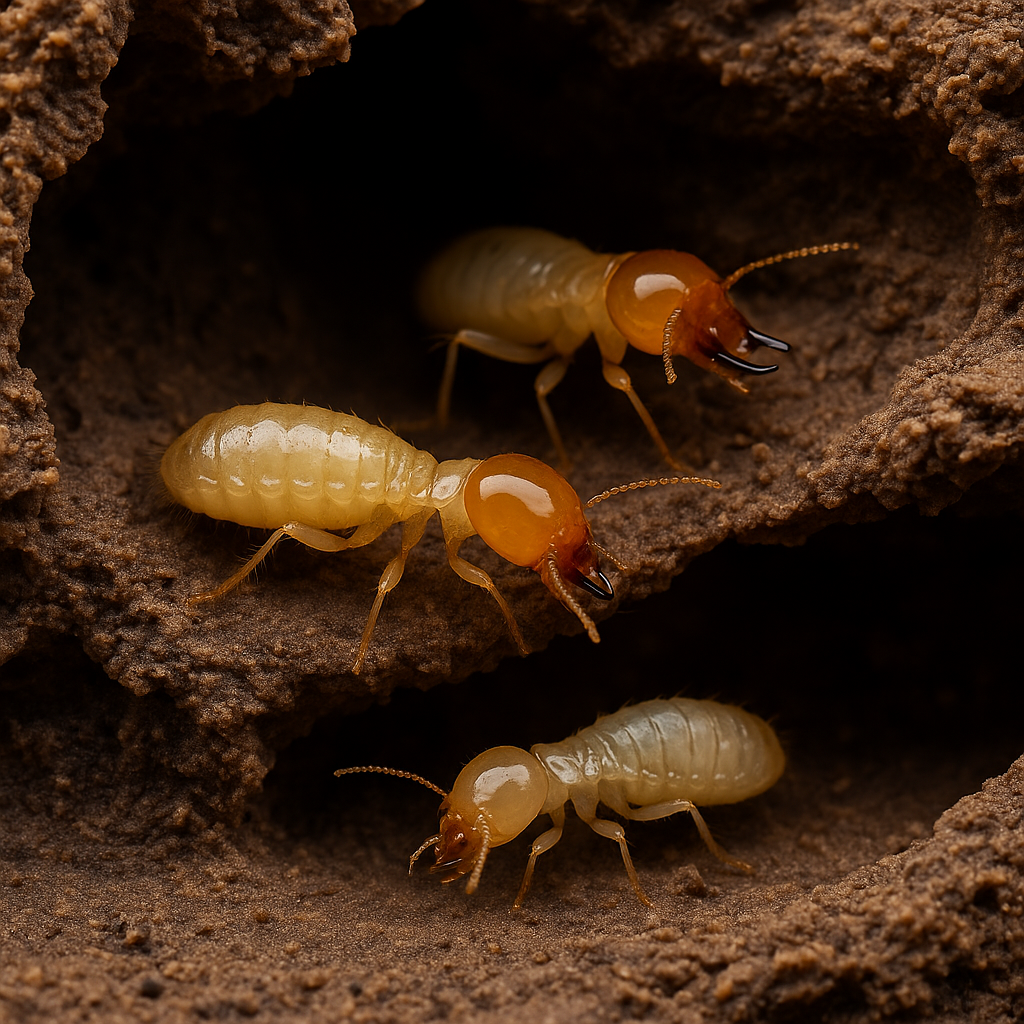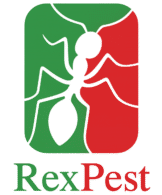Subterranean Termites – Silent Destroyers Below Your Home
Subterranean Termites – The Hidden Threat Beneath Florida Homes
Know Your Enemy: Subterranean Termites (including Formosan & Asian species)
Subterranean termites are the most destructive wood-eating insects in Florida — causing more property damage each year than fires, storms, and floods combined. They live underground in massive colonies and feed on structural wood from the inside out, often undetected for months.
Species to Watch:
– “Eastern Subterranean Termite”: Native, most common in Spring Hill and central Florida.
– “Formosan Termite” (“Coptotermes formosanus”): Non-native, highly aggressive, builds above-ground nests (cartons).
– “Asian Subterranean Termite” (“Coptotermes gestroi”): Tropical invader, thrives in high humidity, often confused with Formosan.
Why They’re Dangerous:
– Colonies can contain over 1 million termites.
– They build mud tubes to access your home’s wood undetected.
– Formosan termites can chew through wood, plastic, and even thin copper sheeting.
– Damage often isn’t visible until it’s extensive — they eat wood from the inside out.
RexPest’s Proven Treatment Plan:
– Free termite inspections with moisture meter and infrared camera.
– Termiticide soil barrier treatments around the home’s foundation.
– In-ground baiting stations with monitoring and colony elimination systems.
– Optional wood treatments and follow-up annual inspections.
Real Cases from Our Field Work:
1. A Spring Hill homeowner thought they had water damage — until our inspection found mud tubes climbing the inside of the wall. We uncovered a 6-foot Formosan carton nest behind drywall.
2. A customer in Hudson had termites entering through a small crack in the garage slab — they’d already damaged baseboards, door frames, and the attic.
3. In Brooksville, we treated a 1960s ranch home that had active colonies in both the crawlspace and shed — the shed had to be rebuilt entirely.
Fun Facts & Trivia:
– Termites never sleep — they chew 24/7.
– A single Formosan colony can consume 1,000 pounds of wood in one year.
– Swarming termites are often mistaken for flying ants — but termites have equal-length wings and straight antennae.
What You Can Do:
– Keep mulch and soil at least 6 inches below siding or wood trim.
– Avoid storing firewood against the house.
– Fix leaky faucets and ensure proper drainage — termites love moisture.
– Schedule annual inspections, especially if your home was built before 2000.
Hurdles to Treatment:
– DIY sprays don’t reach the colony — and can lock moisture into walls.
– Many homeowners confuse signs with water damage or ants.
– Some termite activity stays hidden for years without professional detection.
Why RexPest?
We’ve protected Florida homes from termites for over 30 years. With specialized knowledge of Spring Hill’s soil types and construction methods, we deliver long-lasting protection with clear, no-pressure estimates.
Call Today to Schedule a Free Termite Inspection — Protect Your Home from the Ground Up.

The Damage You Don’t See Is the Costliest.
Subterranean termites are relentless, working underground to invade homes through soil and foundation cracks. These silent destroyers cause more property damage annually than storms or fires. At RexPest, our termite specialists use proven detection and treatment methods to eliminate colonies before they compromise your structure — and your wallet.
